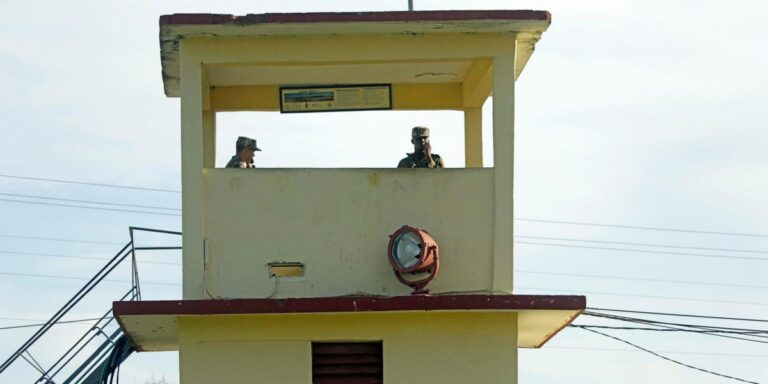- A spy base believed to be linked to China is expanding in Cuba, according to a U.S. think tank.
- The Center for Strategic and International Studies has discovered a new potential site near a U.S. Navy base.
- Cuba’s proximity to the United States gives China a window into intelligence gathering that it cannot access from its own country.
A report from the Washington DC-based Center for Strategic and International Studies said potential spy bases believed to be linked to China have been discovered in Cuba, one of which is located near the U.S. naval base at Guantanamo Bay.
CSIS analysts examined satellite imagery and open source intelligence to identify four “active” facilities in Cuba that could allegedly conduct electronic surveillance activities.
One of the sites, a previously undisclosed building, is located about 70 miles from the U.S. Navy facility at Guantanamo Bay, according to the report.
“These four facilities are among the most likely locations to support Chinese espionage efforts against the United States,” the report said.
Last year, several media outlets, citing officials familiar with classified information, reported that China wanted to set up a spy base in Cuba.
Two anonymous U.S. officials told Politico at the time that Beijing and Cuba were in talks to build a base about 100 miles off the coast of Florida, possibly to collect signals intelligence on military facilities there.
An anonymous U.S. official also told The Wall Street Journal last year that China and Cuba had agreed in principle to a multi-billion dollar project to develop the base.
CNN and The New York Times also reported on the agreement and facility plans.
At the time, the Pentagon and the White House disputed the report.
An anonymous U.S. official also told The Associated Press last year that China had been operating in Cuba since at least 2019.
Chinese spy base in Cuba
CSIS analysts say they found four bases on the island of Cuba, in Bejucal, El Salao, Huahay and Calabazar.
CSIS provided satellite imagery of each site from March and April 2024 to show how upgrades have been made over the past decade.
In Bejucal, located south of Havana and identified by CSIS as Cuba’s largest active facility, a “mysterious” new radome is being constructed that CSIS believes may contain radar or ELINT equipment.
Meanwhile, Wajai’s site has “gradually” expanded over the past 20 years, from just one antenna and a few small buildings in 2002 to 12 antennas of various sizes and orientations, significant operational and support facilities, and even a small solar power plant.
Cala Bazar, a small military installation in Cuba, currently has two visible pole antenna arrays and more than a dozen dish antennas of various sizes distributed throughout a gated area, the images show.
The number, location and orientation of the antennas have changed significantly, likely in response to changes in the facility’s mission, the report said.
CSIS analysts also discovered a new, previously unreported facility in El Salao, southern Cuba, near the Guantanamo Bay Naval Base, a key U.S. military base in the region.
“These are active sites with evolving missions,” Matthew Funaior, a senior fellow at CSIS’s China Power Project and lead author of the report, told The Wall Street Journal.
Strategic location for espionage
Some of the systems reportedly installed in Cuba, particularly antennas, are capable of intercepting signals and gathering information, a technique known in defense circles as signals intelligence, or SIGINT.
According to the CSIS report, the capacity and capabilities of these systems are determined by their size, quantity, orientation and placement.
The CSIS report said Cuba’s proximity to the United States gives China a “significant” intelligence-gathering window that is inaccessible from Chinese territory.
The White House and the Pentagon did not immediately respond to requests for comment, and Cuba’s Foreign Ministry declined to provide a statement.

